Turntable Headshells: How to Choose a Headshell for Your Turntable
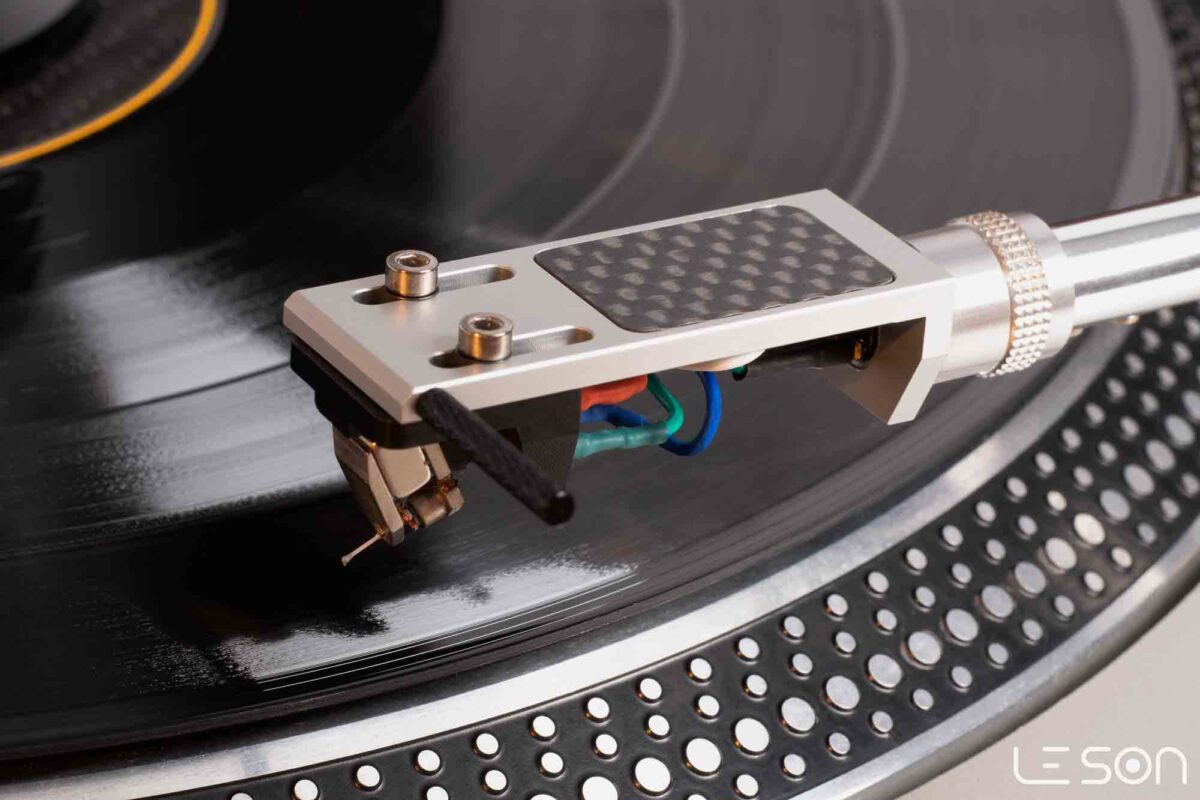
At Le Son, we design and manufacture MC Cartridges, and we regularly install them on all kinds of tonearms.
We recently received several questions from customers regarding turntable headshells, so we decided to share our insights here.
In this article, we will go through the process of choosing a headshell for your arm and cartridge.
A well chosen headshell allows your cartridge and tonearm to work at their best, and will bring your vinyl record listening experience to new heights.
Ready? Let’s get started!
What is the Role of a Turntable Headshell?
Even though the headshell isn’t as crucial as the cartridge for the sound quality of your turntable, it plays an important role and should therefore be considered carefully.
The headshell is the component coupling the phono cartridge to the tonearm. It provides a stable platform for the cartridge to operate, and provides various options for cartridge alignment.
In addition, the headshell holds a important tactile significance since we directly interact with it while cueing the record.
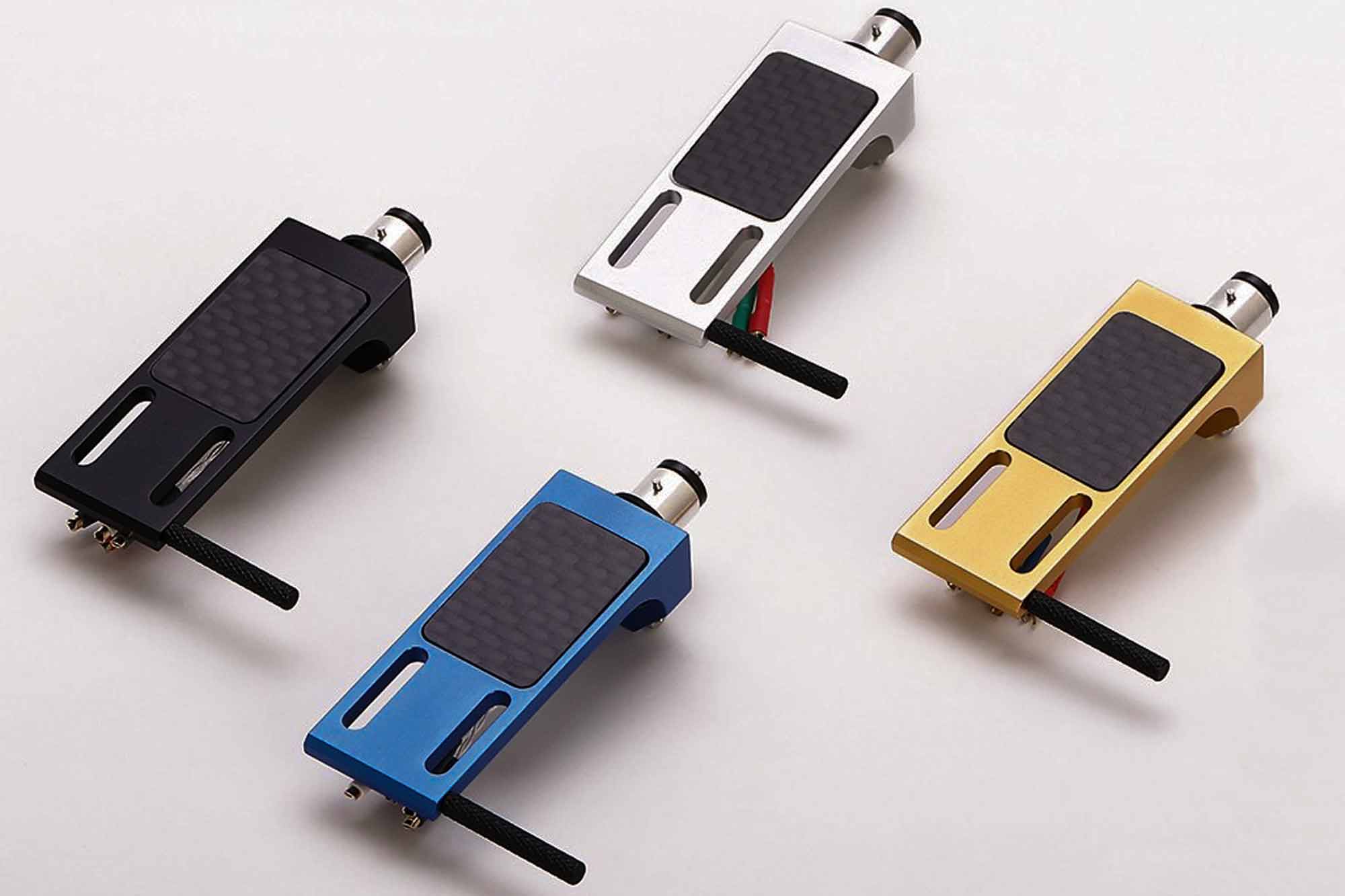
Fixed vs Removable Headshells
Since the early 1970’s, tonearm manufacturers started creating fixed headshell arms. The rationale behind is that a fixed headshell provides maximum coupling with the tonearm, less resonances, and better electrical connexion to the phono preamplifier or Step Up Transformer (SUT). Furthermore, the arm becomes lighter and can work better with high compliance cartridges.
For example in 1972, SME realeased the 3009 Series 2 Improved Tonearm featuring a fixed or removable headshell:
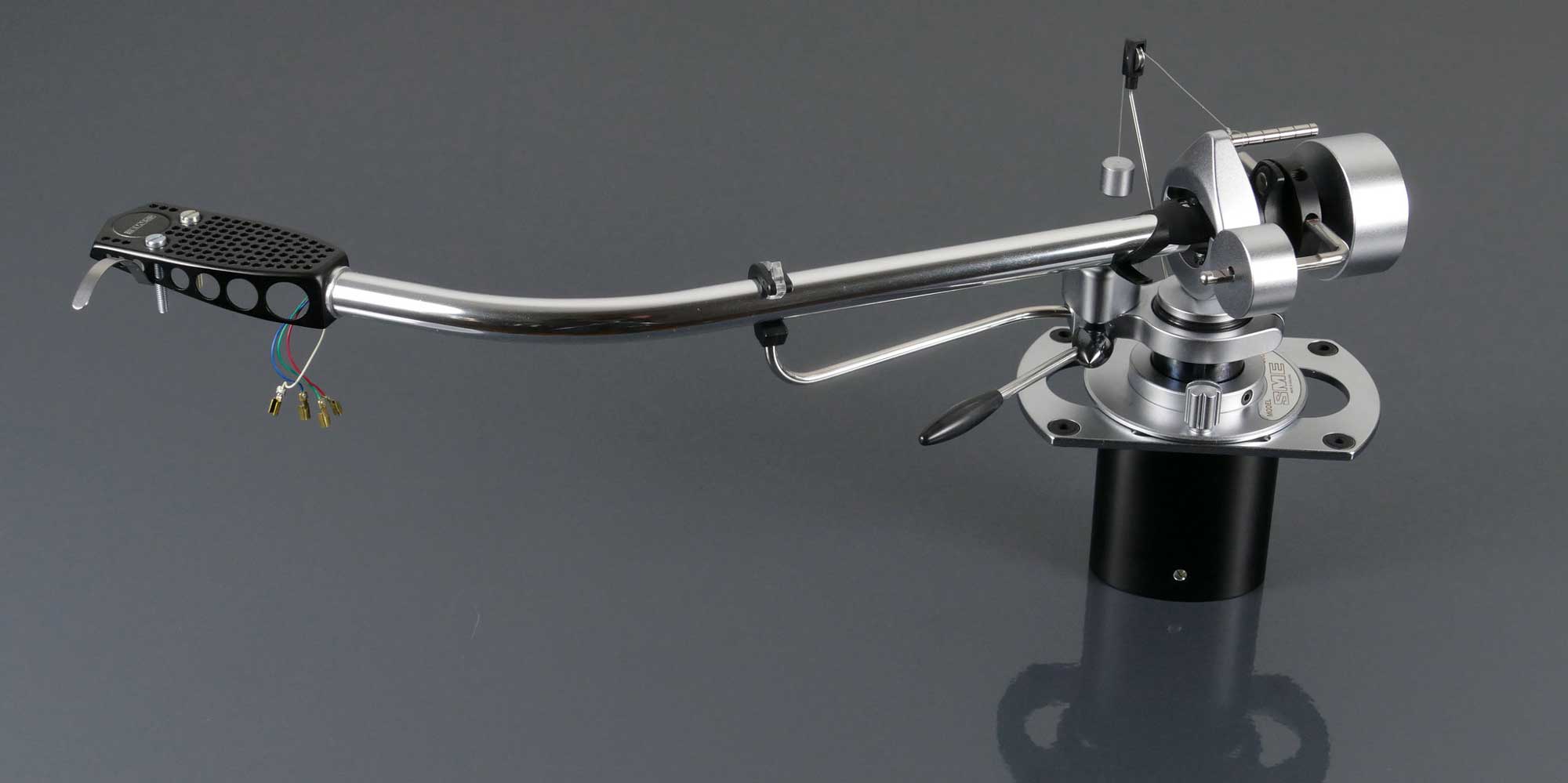
Fixed Headshell SME 3009 Series II Improved Tonearm
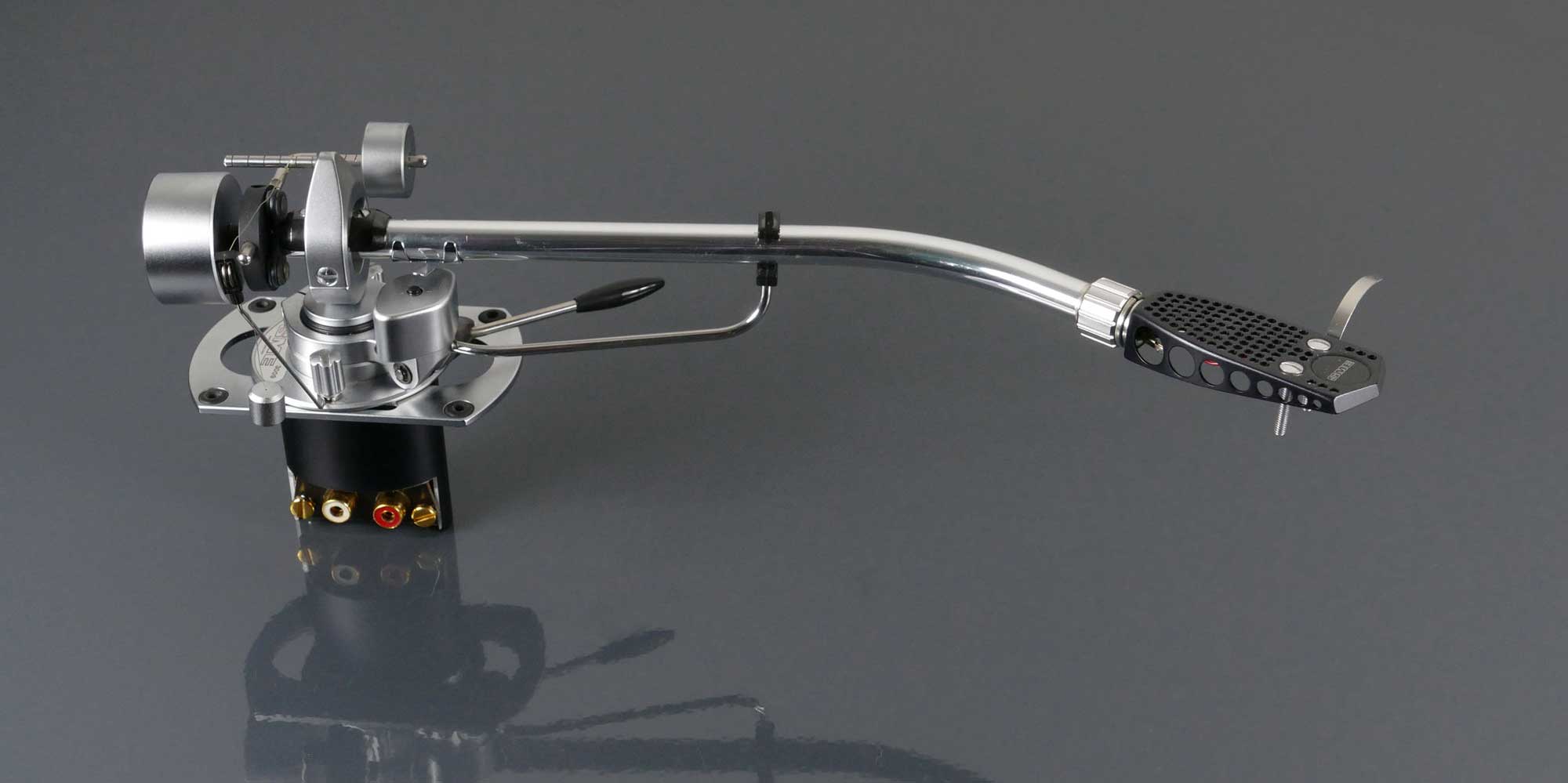
Removable Headshell SME 3009 Series II Improved Tonearm
From our experience, fixed headshell tonearms are indeed often better, but at the expense of versatility and convenience. This is why many audiophiles still prefer removable headshell tonearms.
In the following guide, we will focus on removable headshells, as if your tonearm features a fixed one, well you cannot really replace it.
Guide:
How to Choose a Turntable Headshell in 5 Steps
1. Tonearm Geometry & Connector Type
First, you need to make sure you can properly connect your headshell to your tonearm.
The 3 main tonearm geometries are Straight, J-Shaped, and S-shaped:
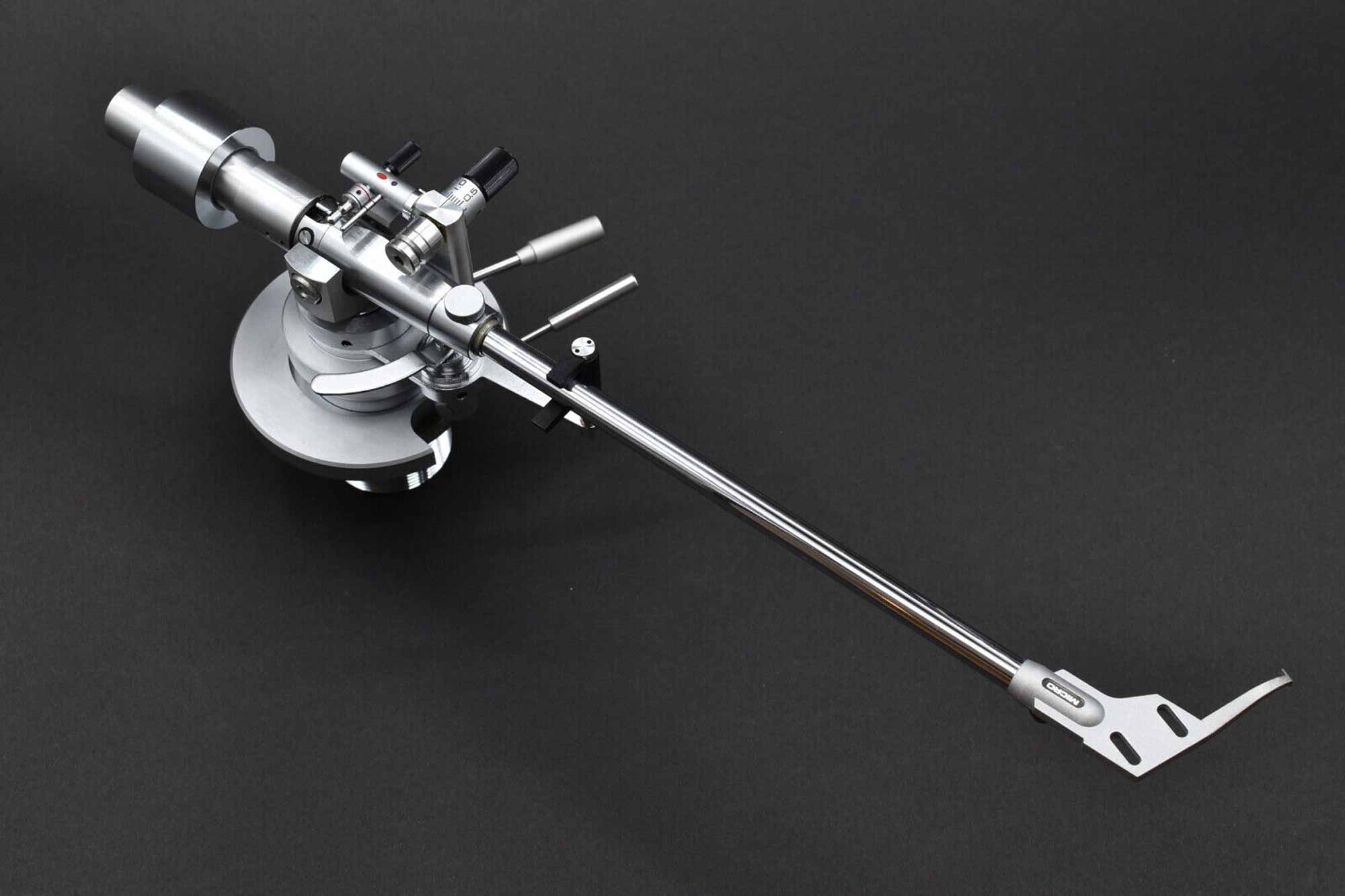
Micro MA-505 MKIII Straight Arm
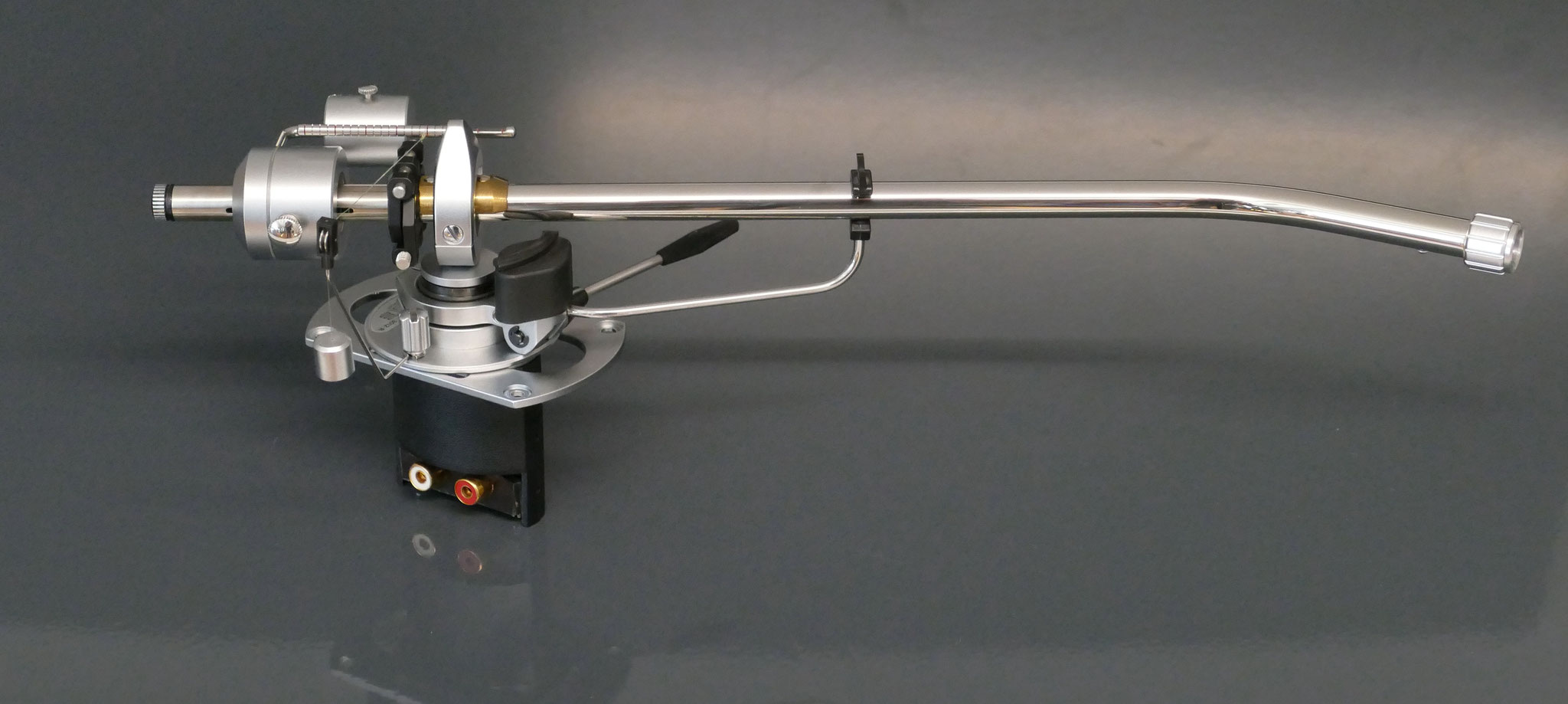
SME 3012-R J-Shaped Arm
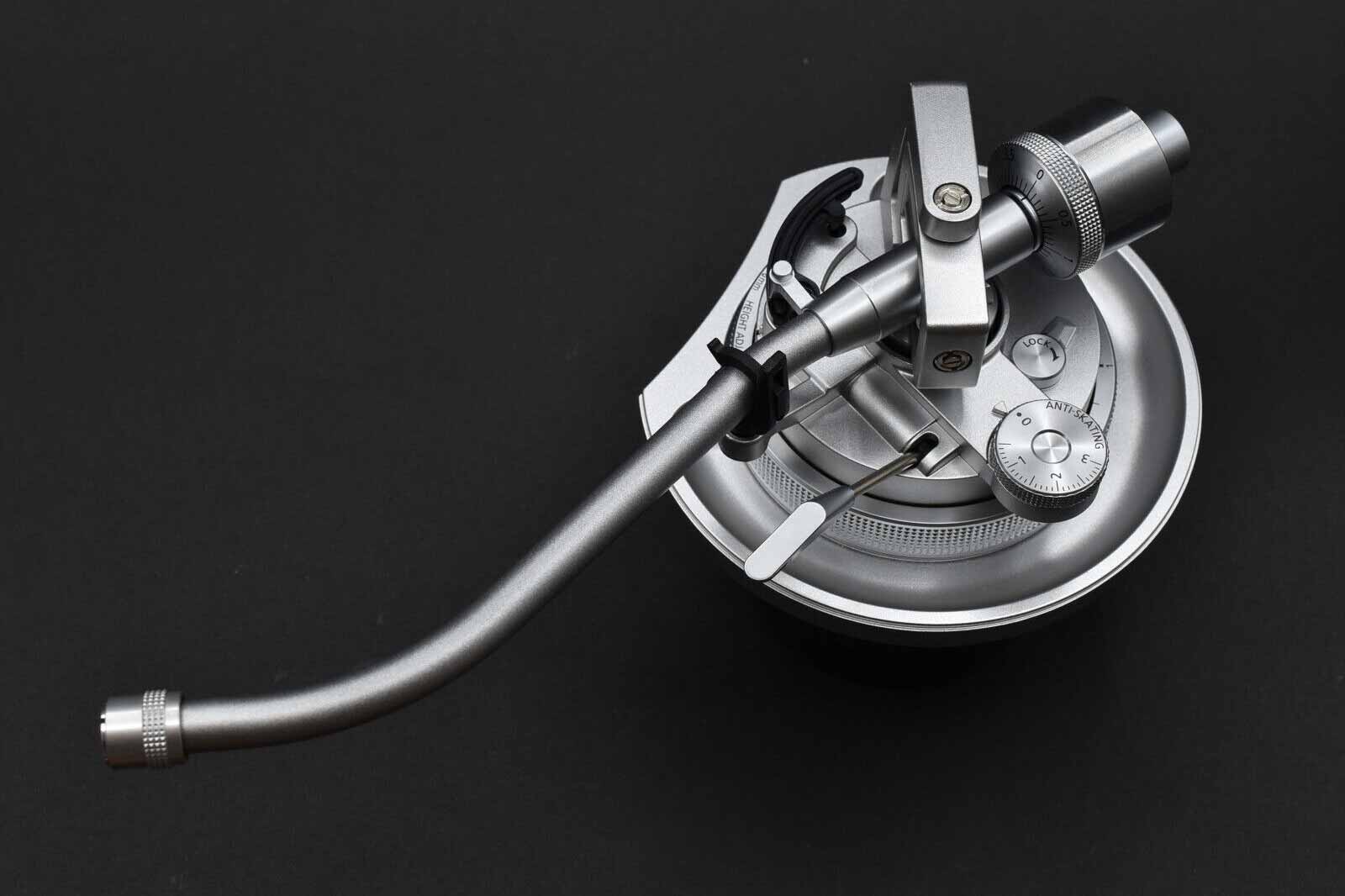
Technics SL-1200G S-Shaped Arm
Straight tonearms generally have a fixed headshell, which is often angled to minimize tracking error. When they feature a detachable headshell, the connector socket is often specific to the turntable manufacturer, so you need to make sure you get the right one.
Brands like Thorens, Denon, and Onkyo often feature proprietary connectors on their vintage models.
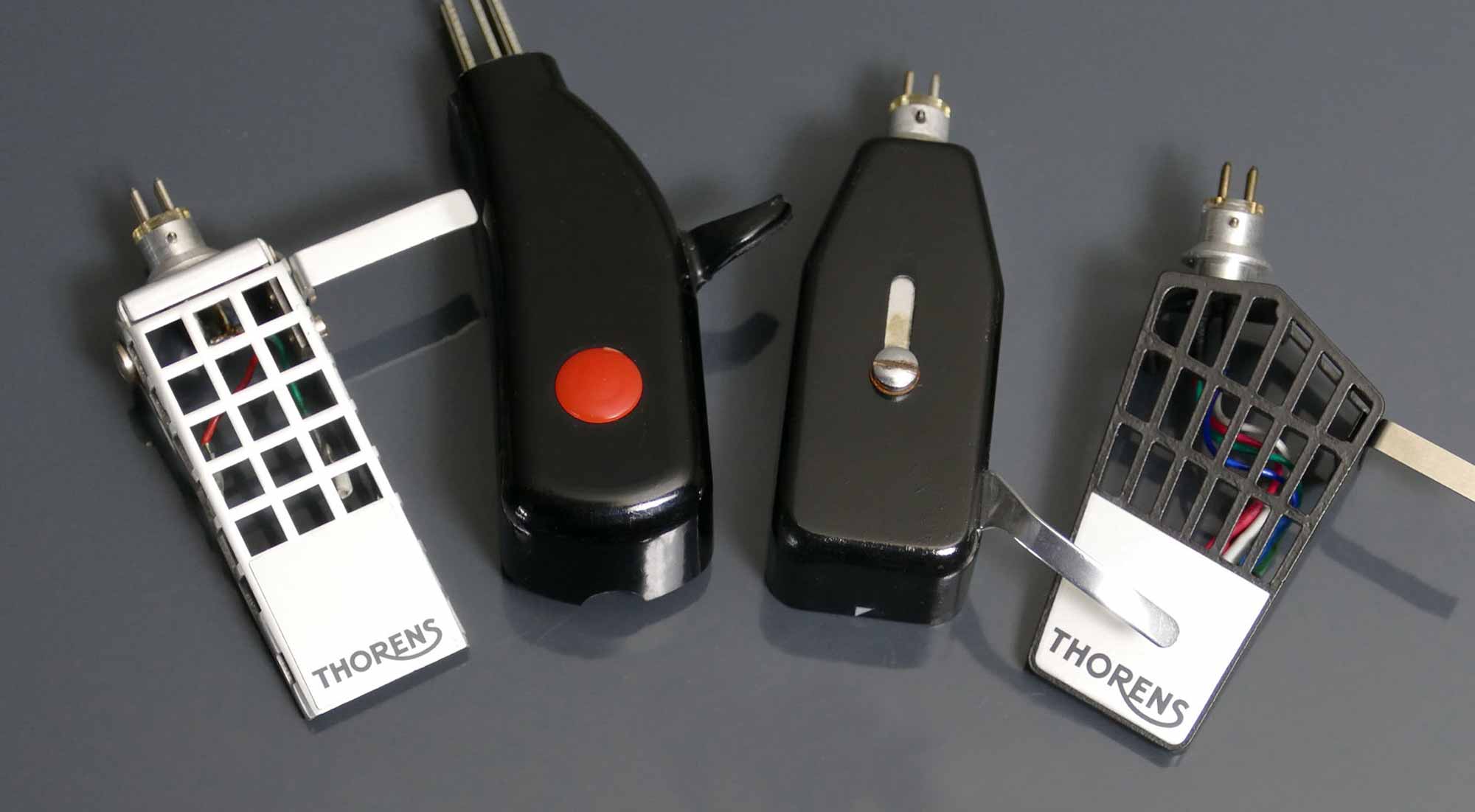
A set of vintage Thorens headshells with their special connectors
J-Shaped and S-Shaped tonearms typically use a H-4 Bayonet Mount, also known as “4-Pin Universal Connector” or “SME Type Connector“.
It is so because the British tonearm manufacturer SME Limited pioneered this connector type on its widely used and admired products during the 1960s and 70s.
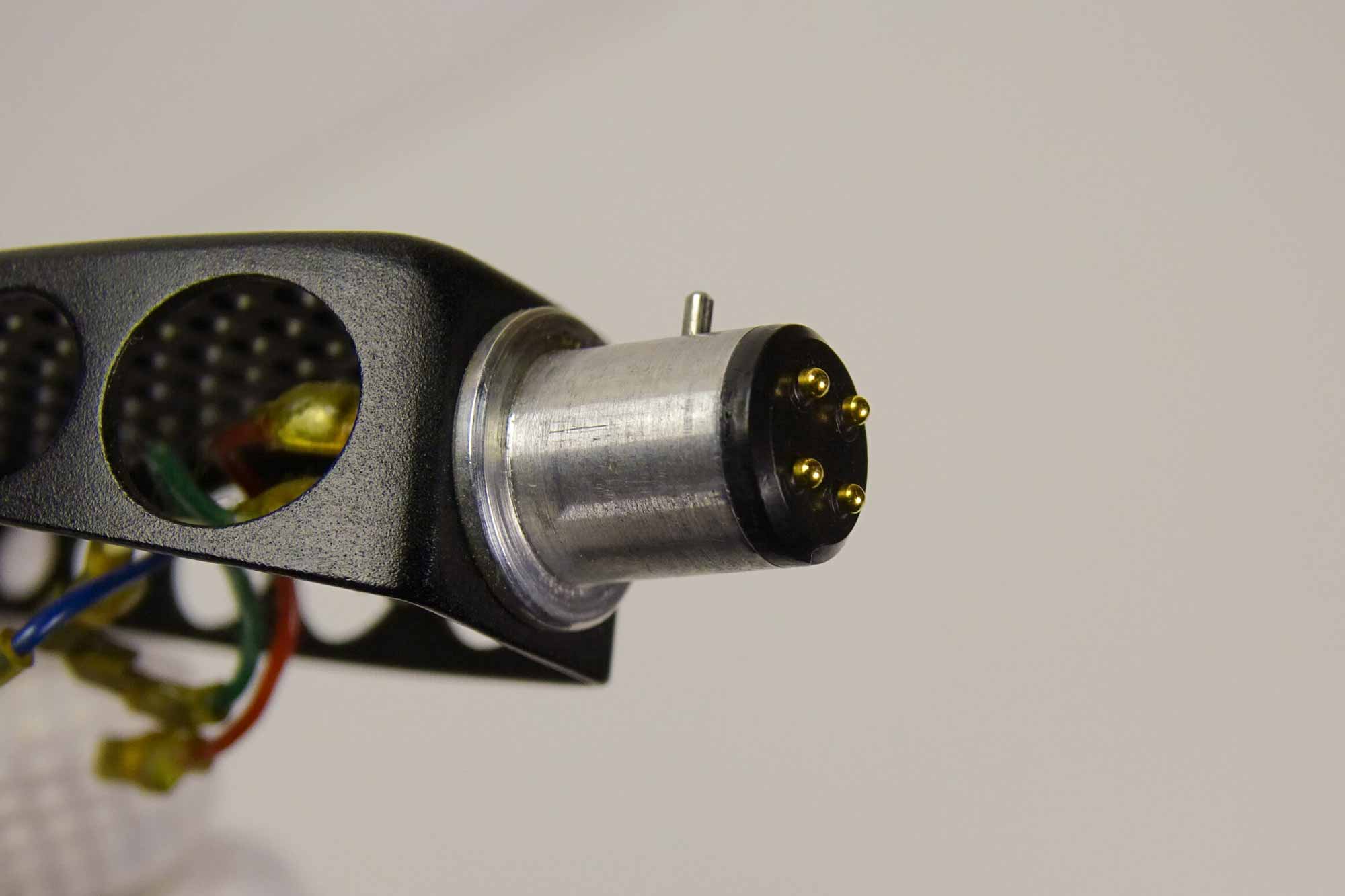
SME Type Headshell Connector
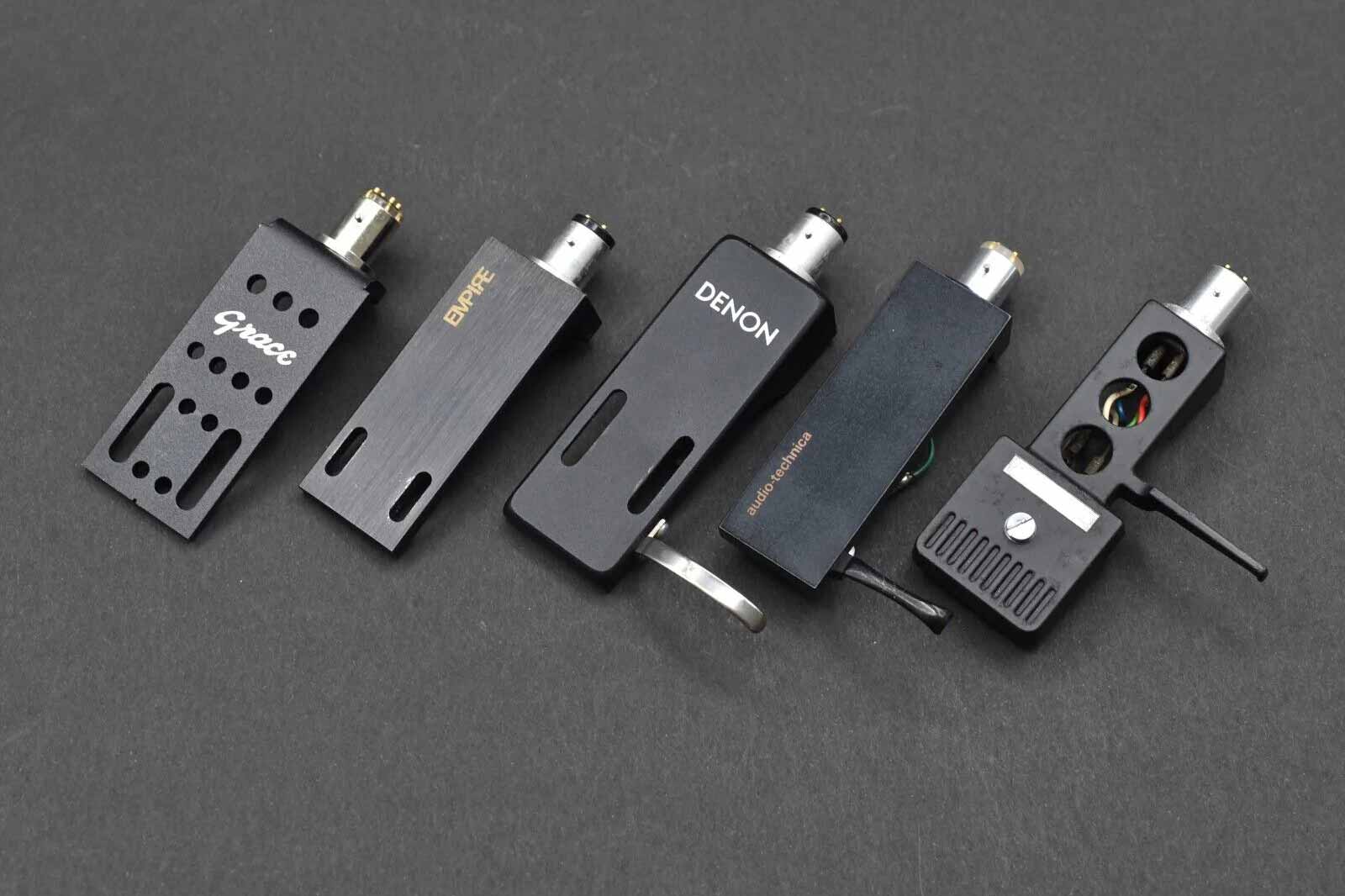
A set of vintage headshells (Grace, Empire, Denon, AT, and Technics) with SME Type Connector
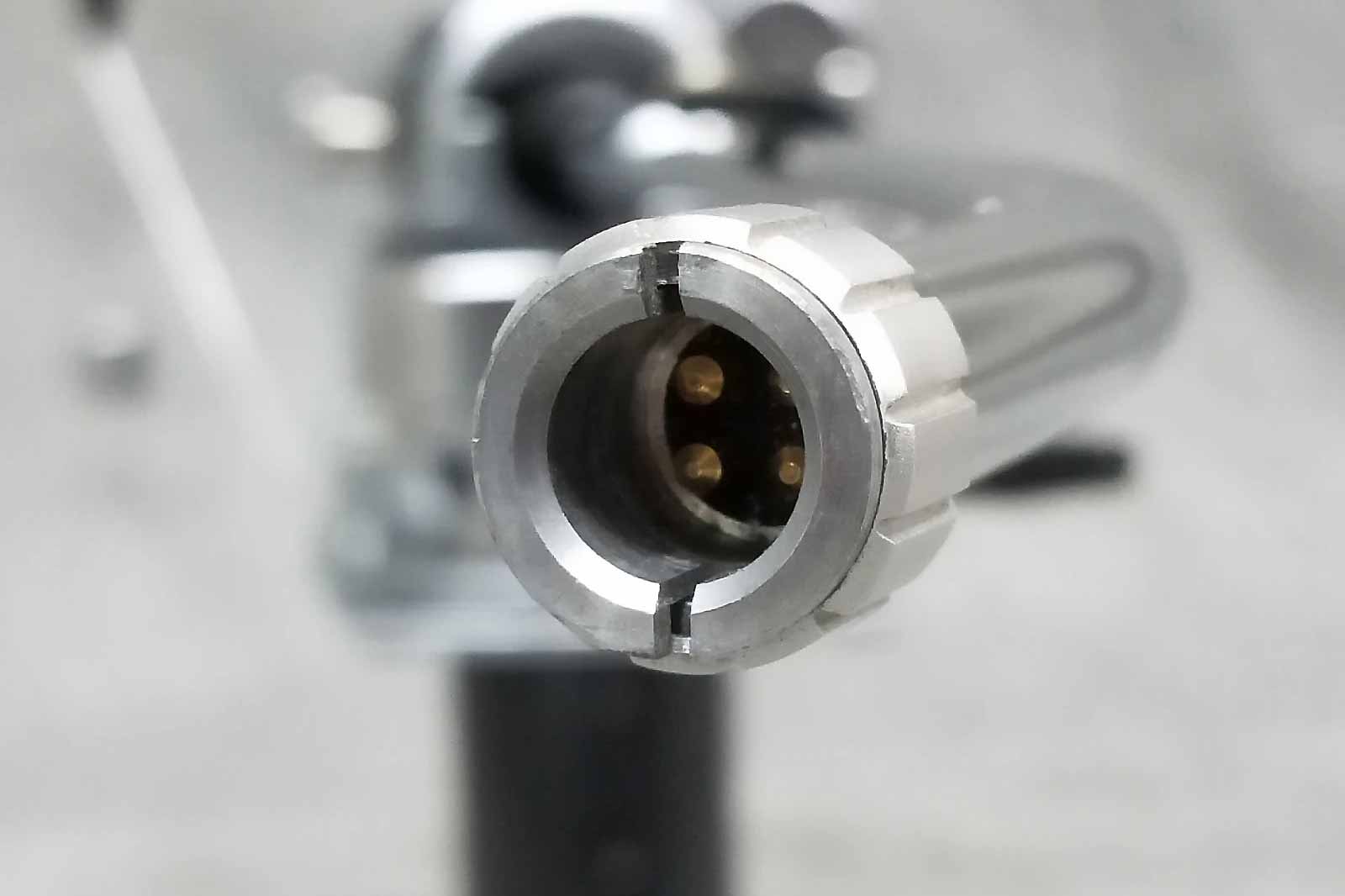
Connector Socket on the SME 3012-R Series II Arm
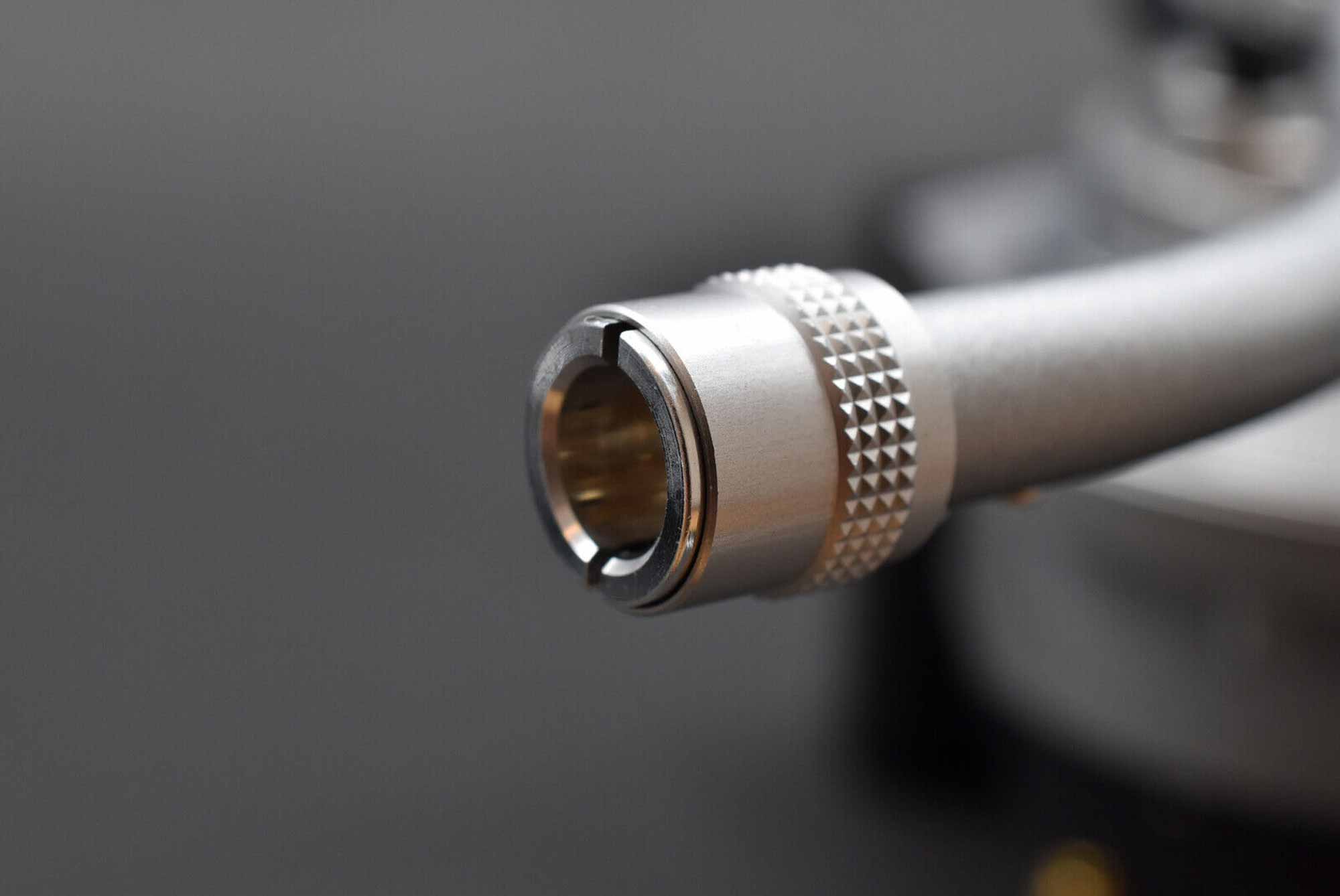
Same Connector Socket on the Technics SL-1200G Turntable Arm
Note: the SME Type Connector looks similar to the EMT-Neumann Type Connector, but they are actually quite different:
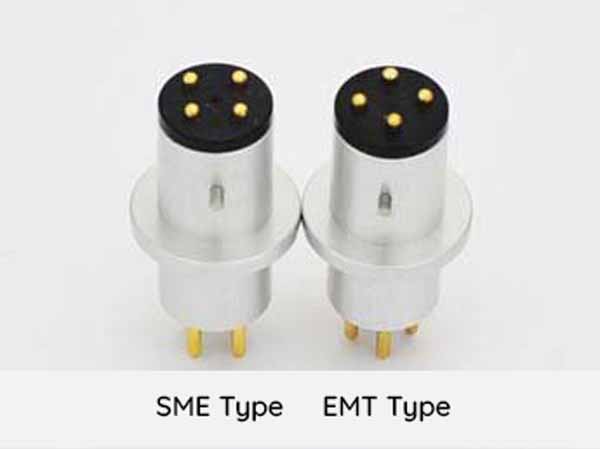
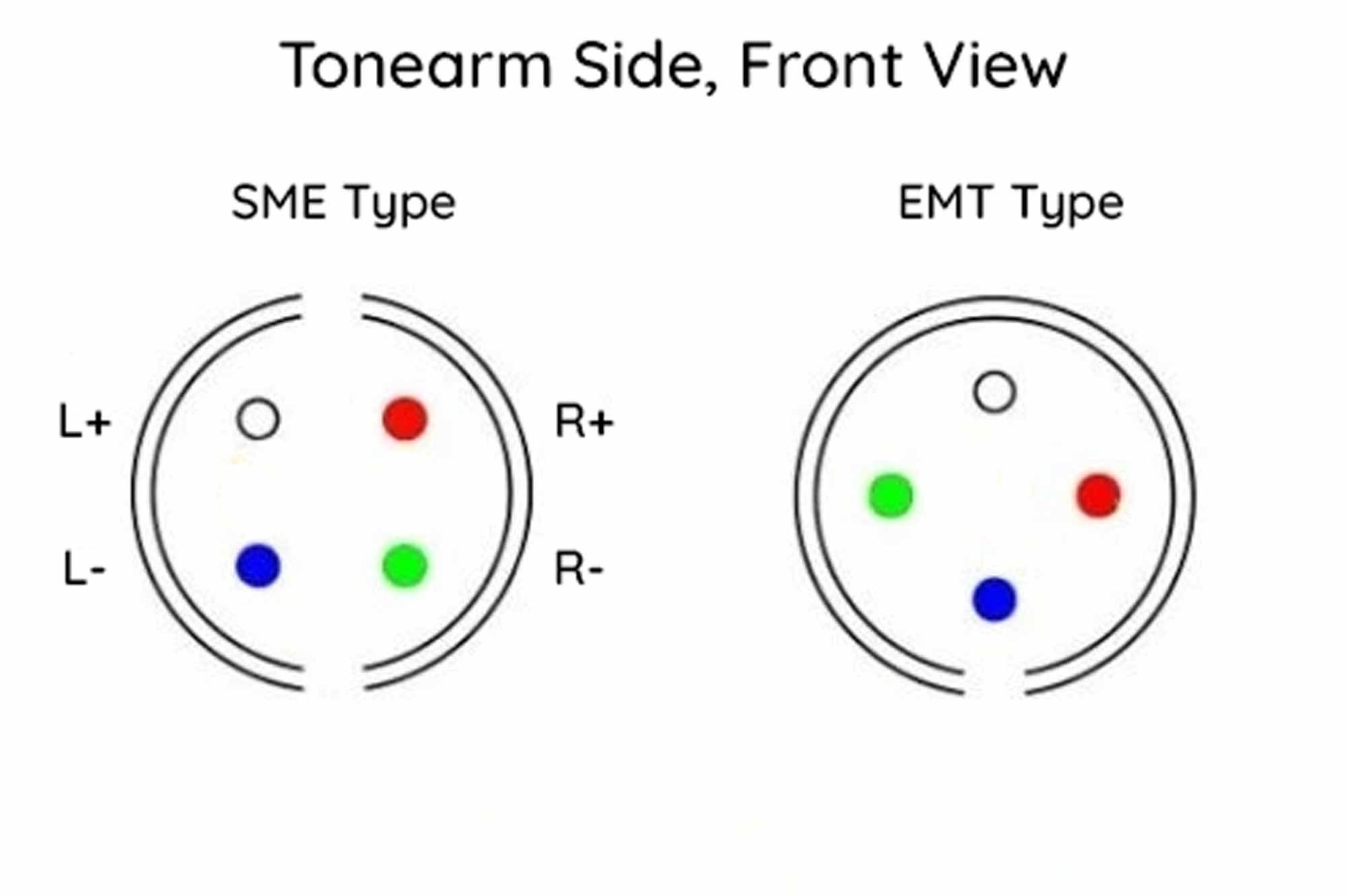
2. Cartridge Mounting Style
There are two common cartridge mounting styles: the standard 1/2-inch mount and the P-mount (T4P).
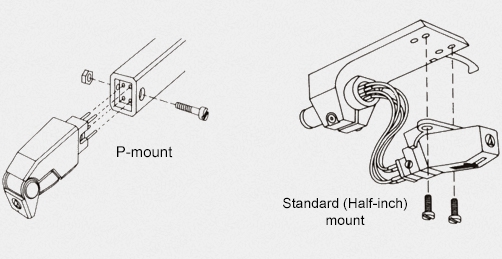
The majority of modern phono cartridges feature the standard 1/2-inch mount (mounting holes are 12.7mm appart), while some older models or entry-level turntables may utilize the P-mount system.
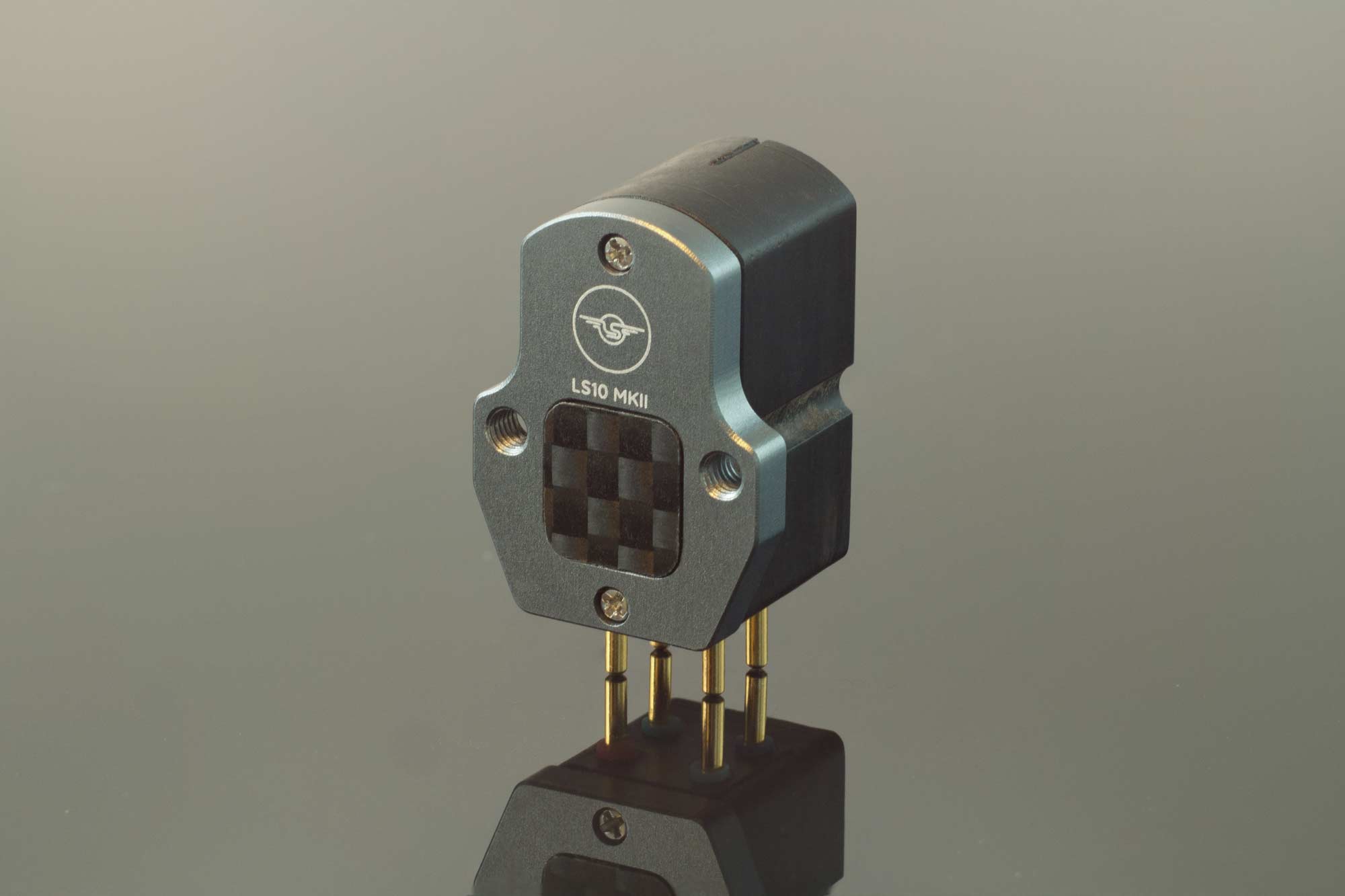
1/2-inch Mount – Le Son LS10 MKII Moving Coil Cartridge
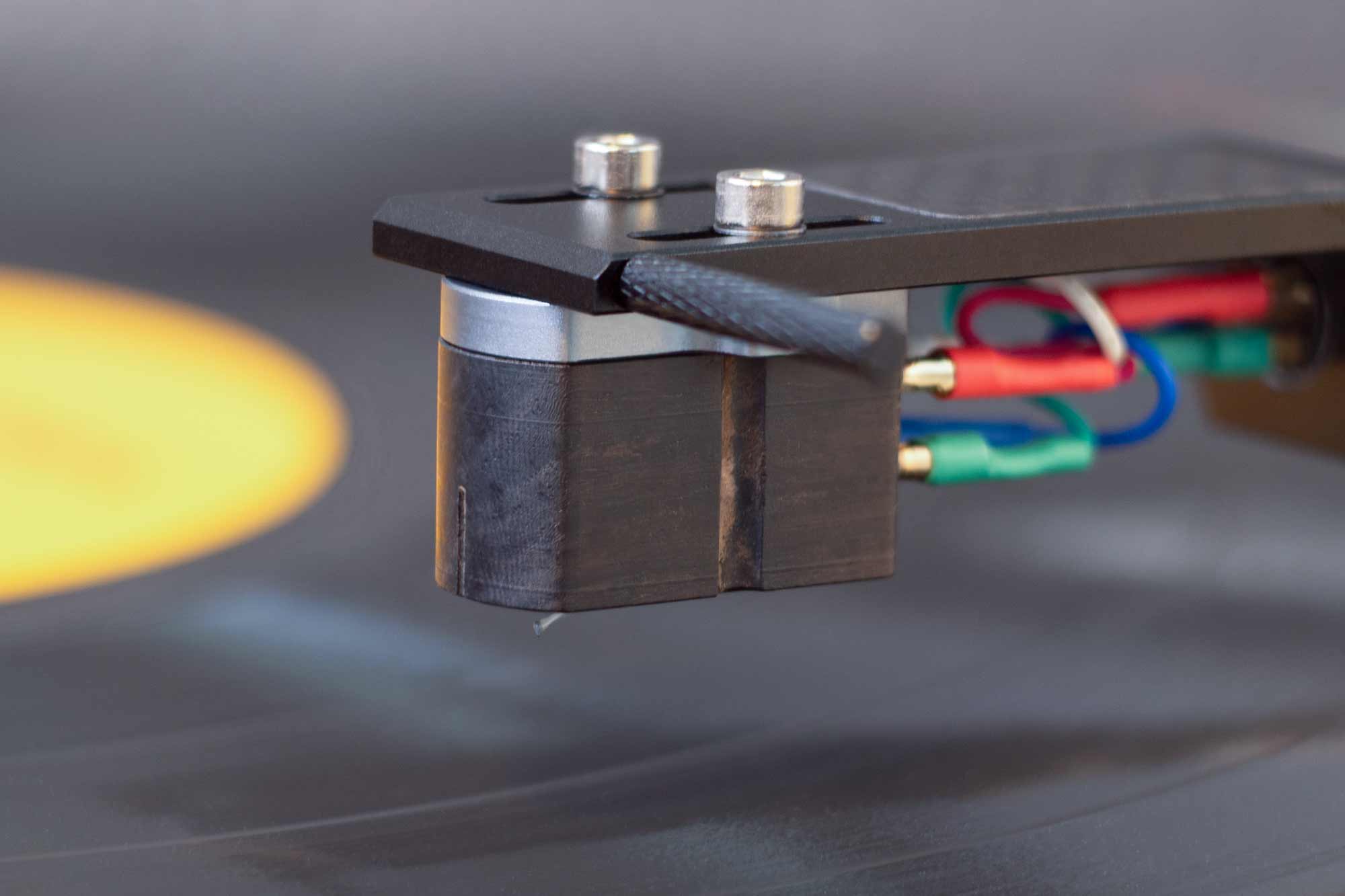
1/2-inch Mount – Le Son LS10 MKII Moving Coil Cartridge
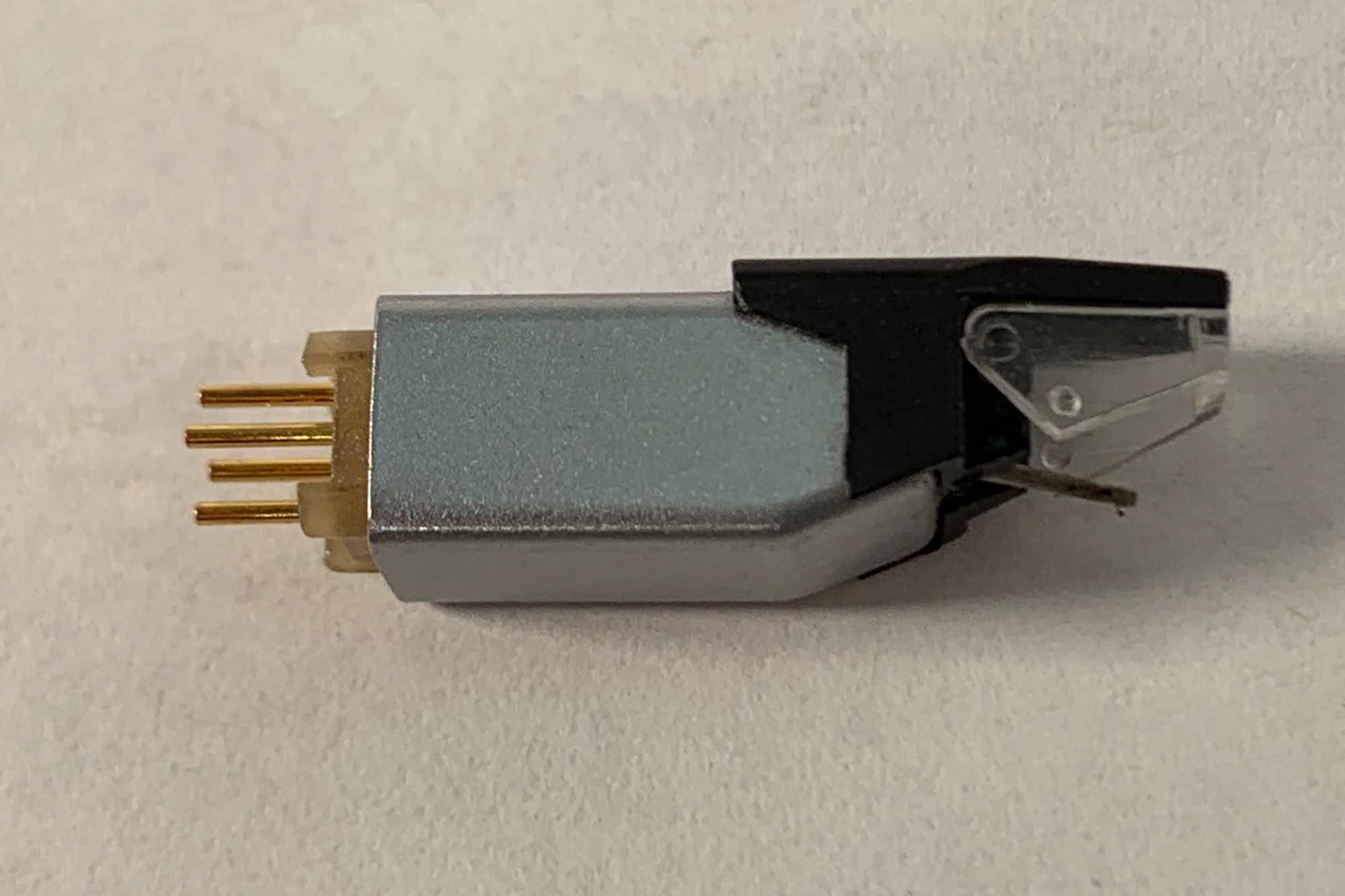
P-Mount – B&O MMC3 Moving Coil Cartridge
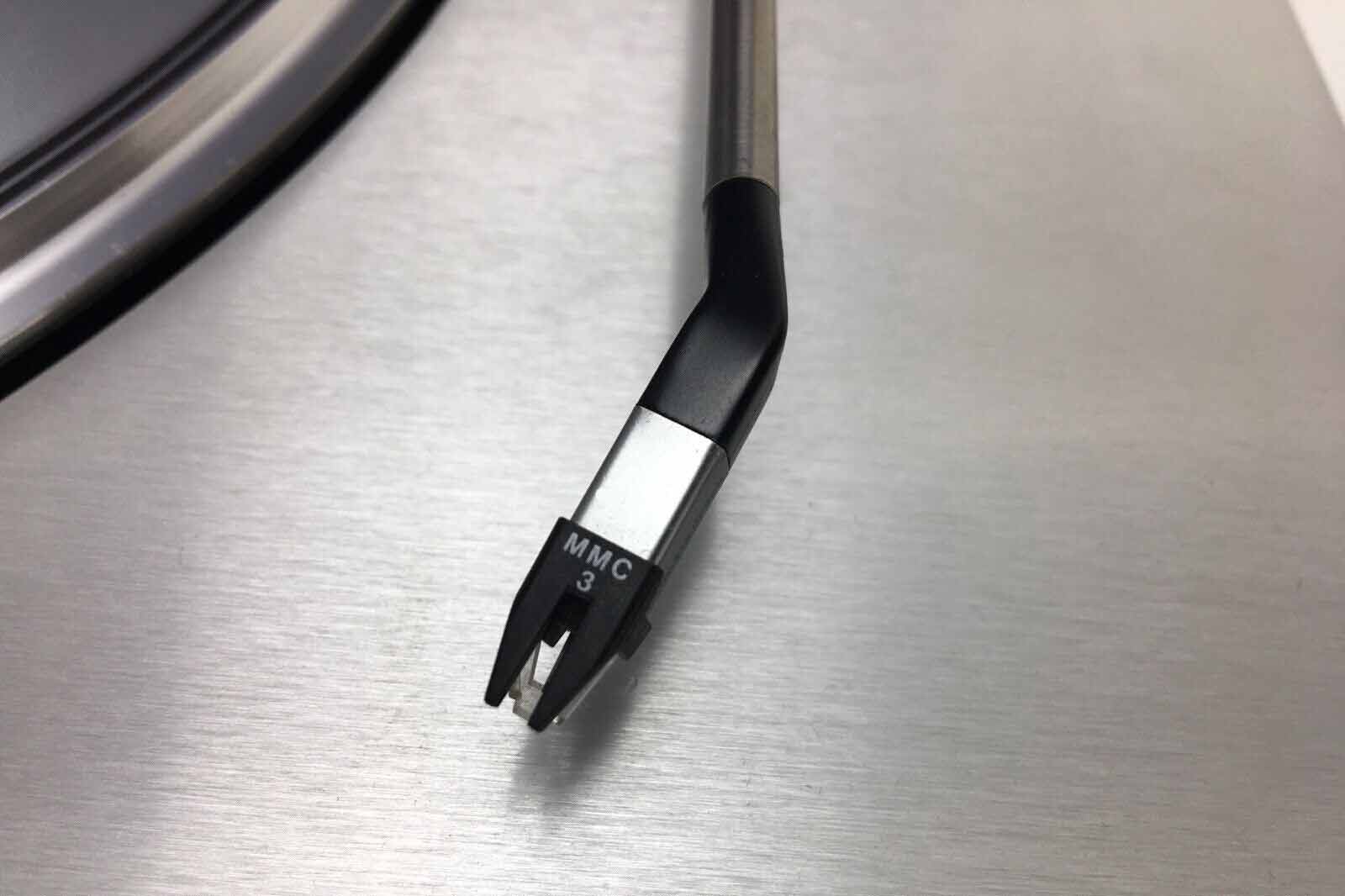
P-Mount – B&O MMC3 Cartridge on a Beogram 1800 Arm
From our experience, the 1/2-inch mount is better than the T4P mount at coupling the cartridge to the headshell.
If you have a P-mount cartridge and want to use it on a 1/2-inch mount headshell, there are some adaptors available out there.
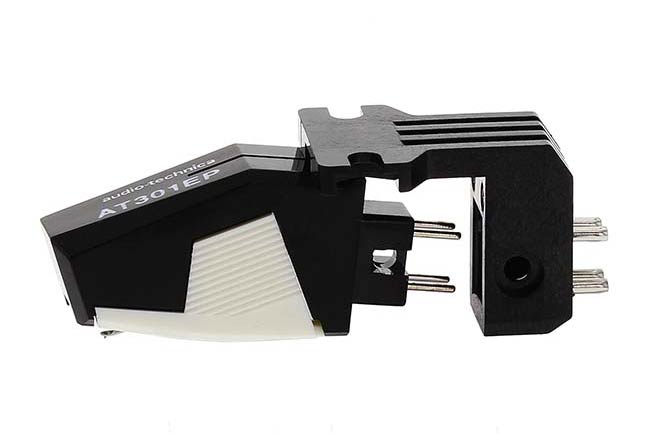
P-Mount to Standard Mount Adaptor with an Audio Technica AT301EP Cartridge
3. Cartridge Compliance and Tonearm Effective Mass
Any cartridge / headshell / tonearm combination will exhibit resonance at a specific frequency (or more).
This resonance is due to the interaction of the cartridge (acting as a spring), and the weight of the arm (acting as a mass). The “springiness” of the phono cartridge is described as compliance, and the weight of the arm is specified as effective mass.
At resonance, the cartridge / headshell/ tonearm assembly produces a dramatic rise in output. An increase of 3 to 6dB is common. This output boost can cause problems if it occurs in the audible range (above 20Hz), or in the area where record warps and rumble occur (below 5Hz).

A: deformation of a spring by adding mass; B: change in amplitude of vibration at resonant frequency
Therefore, the goal in matching a specific cartridge and tonearm is to achieve a resonance in the 7 to 12 Hz range.
Here is the formula for estimating the resonant frequency:
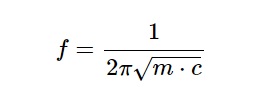
π = 3.1415927
m = Total effective mass (in g) = mass of cartridge + headshell & wires + fixing screws + tonearm effective mass
c = Cartridge dynamic compliance (in µm/mN at 10Hz)
Knowing this, it appears that the key point in choosing a detachable headshell is its weight!
To calculate the optimum headshell weight for your tonearm and cartridge, you can find a good online resonance calculator here.
4. Materials and Construction Work
Headshells can be made from various materials, each imparting its own characteristics to the component.
The materials often used for the body are aluminum, magnesium, titanium, carbon fiber, and wood (ebony, maple, rosewood, and more).
Good headshells also feature high quality connectors, which ensure optimum and long lasting electrical contacts between the cartridge and the tonearm.
Besides body and connectors materials, the overall design also affect the final result.
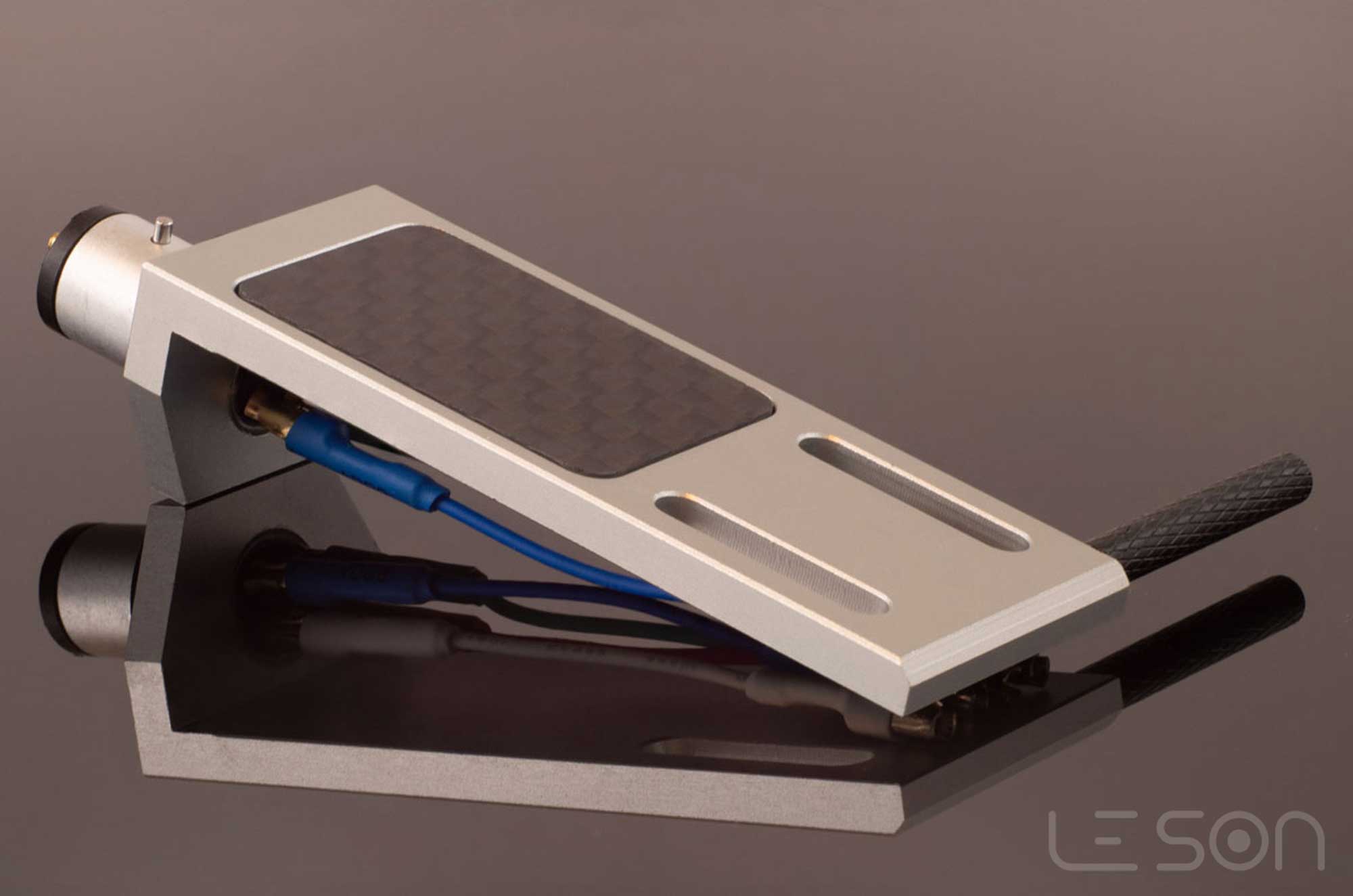
Le Son Headshell – Aviation Aluminium & Carbon Fiber body
Overall, it is difficult to say if a specific headshell material will work well with a given tonearm, however we now know that the headshell weight is the most important factor for optimum performance.
We therefore recommend to get the headshell weight right before anything else.
5. Headshell Alignment Possibilities
Regarding alignment, it is important that your headshell provides enough space to set the correct cartridge stylus overhang & tilt. If the latter are incorrect, it will impact the tracking accuracy and the sound quality will greatly suffer.
For example, SME headshells have a great look with their folded edges, but they cannot host all cartridges due to their limited available space.
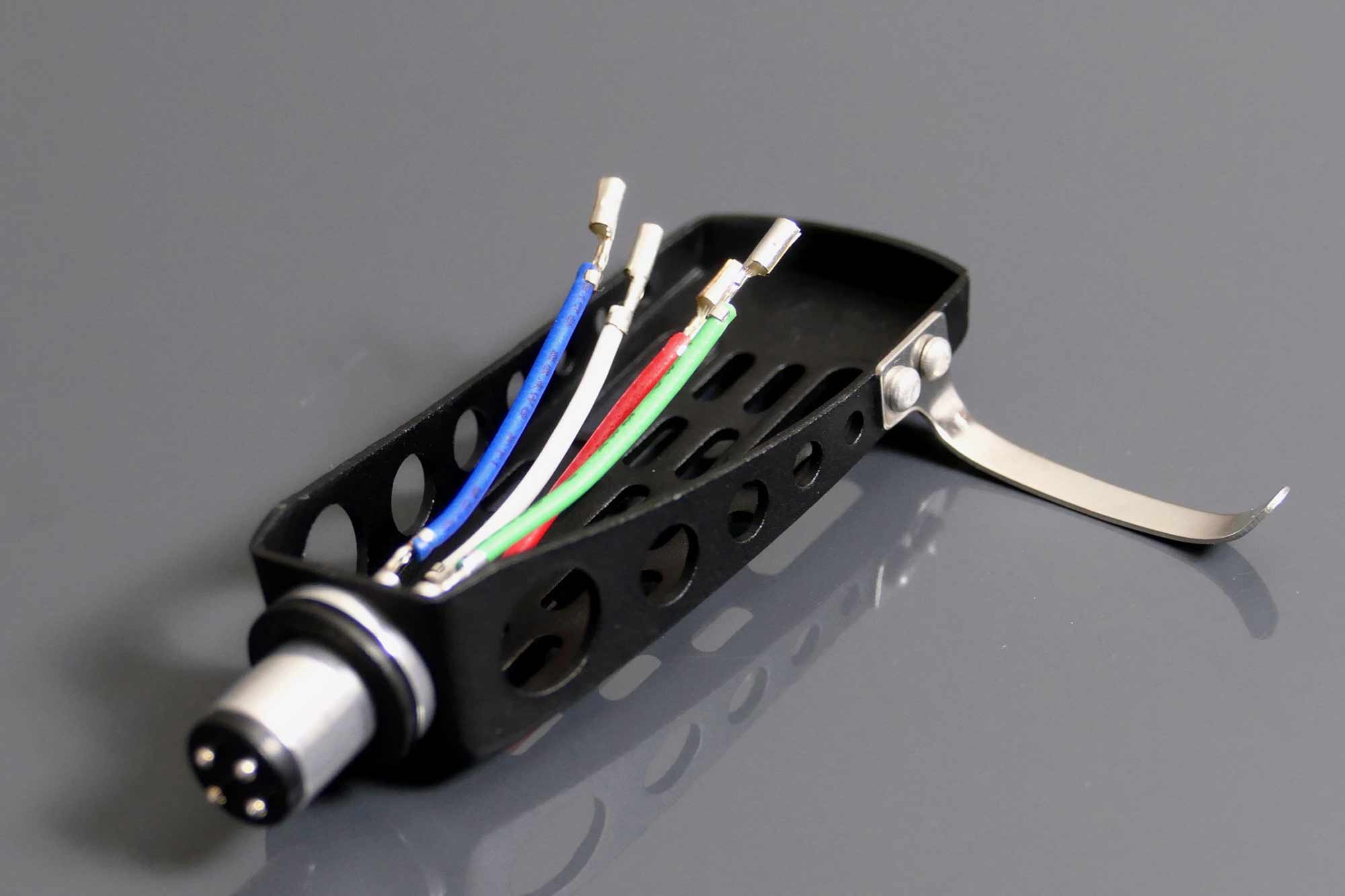
SME Style Headshell – Very light but provides limited space for cartridge alignment
Besides overhang, certain headshells also offer adjustable azimuth. This feature adds weight and is rarely needed if the cartridge and tonearm are well made.
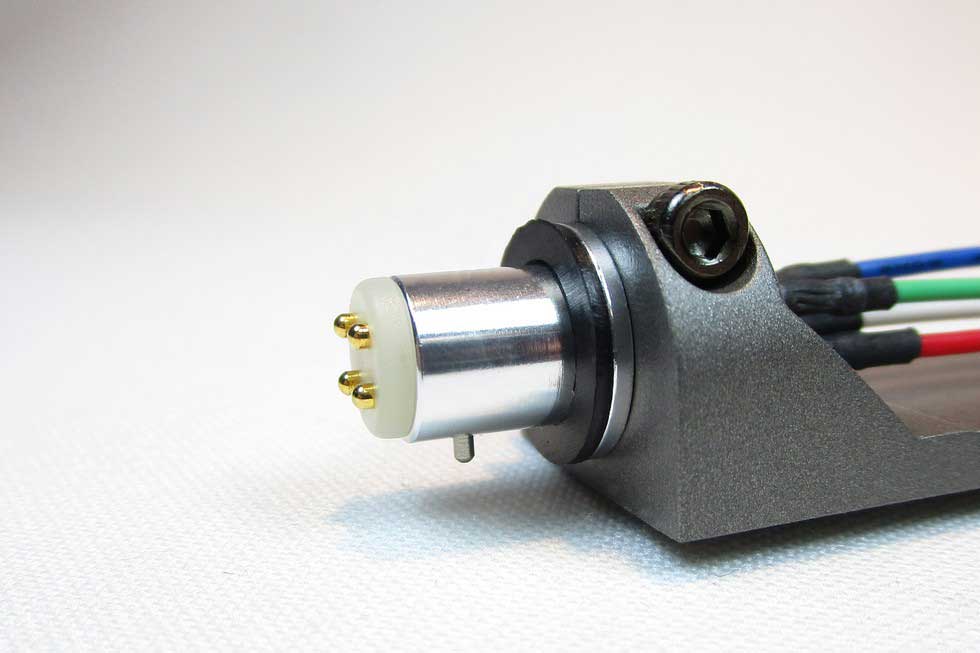
Adjustable Azimuth Headshell – Magnesium body, SME Style Connector
Turntable Headshells: Conclusion
Choosing the right headshell for your tonearm and cartridge is an important step in achieving the best possible sound quality.
Consider the compatibility, materials, construction, weight, adjustability, and aesthetics to find the perfect headshell that complements your equipment and listening preferences. Investing time in selecting the right headshell will ensure optimal performance and enhance your overall vinyl listening experience.
So, start exploring the options available and elevate your analog journey to new heights!
Turntable Headshells: Credits
Pictures:
Sascha Zeier from Riverside Audio Switzerland. This company specializes in vintage Thorens parts and restored turntables & tonearms. We used some pictures of their restored SME tonearms and vintage Thorens headshells for the purpose of this blog post.
Further readings about arm / cartridge resonance:
The Korf Blog. They have released an interesting article in 2 parts about Cartridge Compliance and Tonearm Effective Mass here: Part I and Part II.
Join Our Community!
Subscribe to La Newsletter
Stay informed with the latest news and blog posts from the world of high fidelity sound.
Gregory de Richemont
Gregory de Richemont is the founder of Le Son, where high-fidelity sound meets emotional depth. Blending a background in global business with a lifelong passion for analog, Gregory left the corporate world to follow the call of pure sound. His work is dedicated to creating listening experiences that don’t just impress — they move. Learn more on our About Us page.

